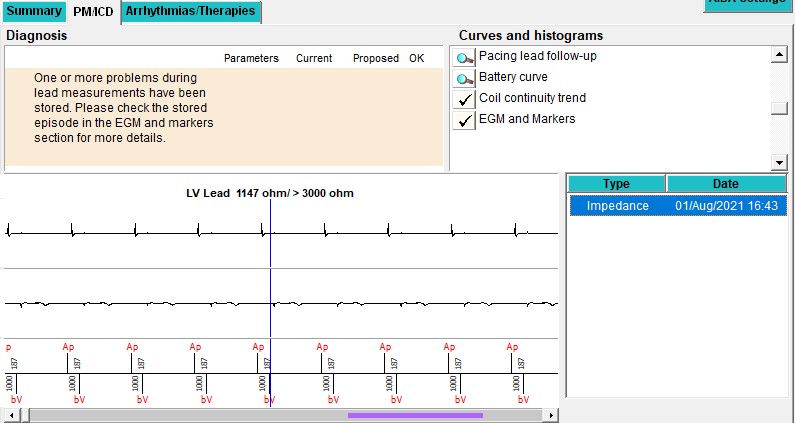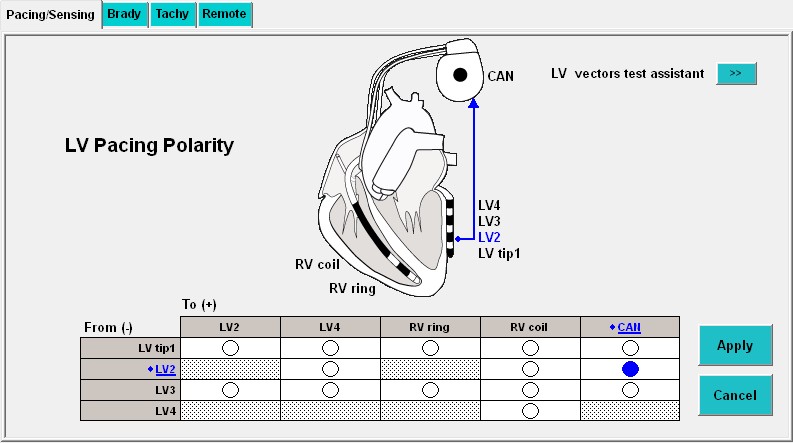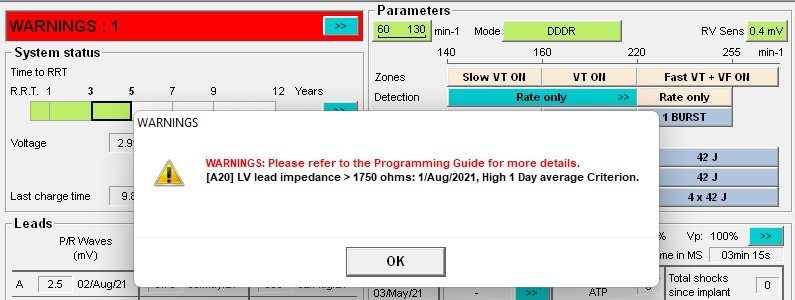LV impedance alert
Case Summary
0 of 1 Questions completed
Questions:
Information
You have already completed the case before. Hence you can not start it again.
Case is loading…
You must sign in or sign up to start the case.
You must first complete the following:
Results
Results
Time has elapsed
Categories
- Not categorized 0%
-
The impedance of LV leads are often higher than conventional RA and RV lead. Gradual changes are normal and impedances can be over 1000 Ohms. But sudden changes in impedance, certainly to >3000 Ohms or <200 Ohms is diagnostic of LV lead dysfunction.
The LV lead impedance curve shows a sudden rise in impedance, confirming the diagnosis of (partial) lead fracture.
In case of a LV lead impedance alert, an EGM is registered. In this case, no abnormality can be observed, but this does not rule out lead dysfunction at all.
Today, most implanted LV leads are quadripolar, meaning they have four conductors to the lead tip electrodes; distal tip #1 to #4 which is the most proximal electrode. Quadripolar leads have many advantages, the most important is the possibility of selection of the optimal pacing vector (lowest threshold without phrenic nerve stimulation). But another advantage is that, in case of conductor fracture, the other electrodes can be tested. This means that the problem may be solved by reprogramming, avoiding placement of a new LV lead.
Device interrogation confirmed the presence of a quadripolar lead, programmed as LV2 – to – can. The LV vector express was launched (see this video for an example) and another LV pacing vector was programmed.
- 1
- Current
- Review / Skip
- Answered
- Correct
- Incorrect
-
Question 1 of 1
1. Question
A 63 year-old woman implanted with a CRT-D (Platinium SonR) due to dilated cardiomyopathy with left bundle branch block. She comes to the device clinic because of a remote monitoring alert.
You interrogate her device and see the following screen.
What is the probable diagnosis?
CorrectIncorrect





